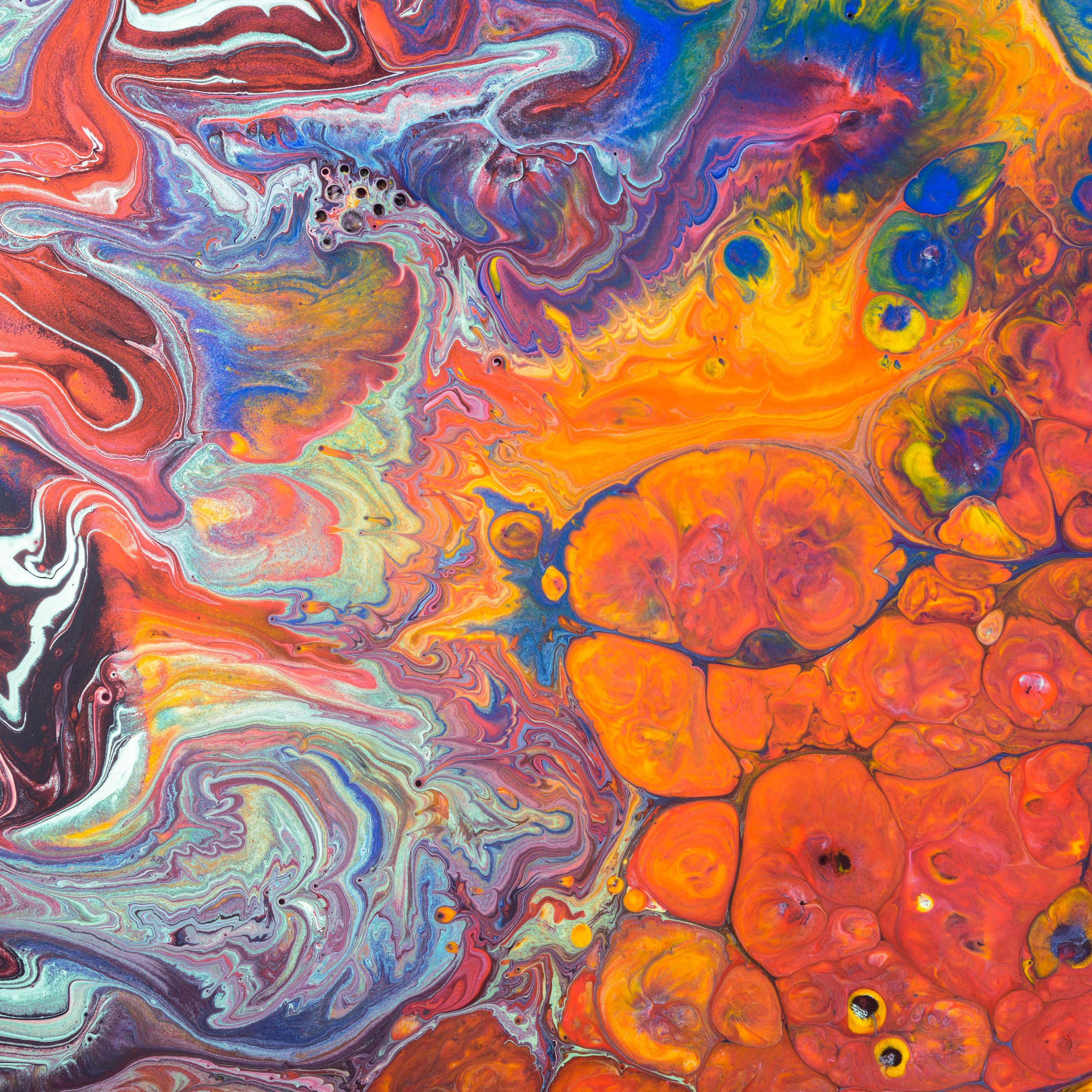What factors are shifting the perception of romance fiction and aiding in diminishing the societal stigma surrounding the genre?
What factors are shifting the perception of romance fiction and aiding in diminishing the societal stigma surrounding the genre?
Elsa Caruso
Since its emergence in the eighteenth century, the romance genre has entranced readers globally. Its enchanting portrayals of love in any and all possible settings infuse optimism into life’s challenges while simultaneously empowering women to discover agency and resilience in their sexuality (Time, 2017). Historically, romance has been a genre for women, by women, and about women, with approximately 84 per cent of its readership being female (Rockett, 2017). However, it is for this reason that romance has faced criticism, as is discussed in this report, despite being one of the most popular genres, with 25 per cent of all books sold in the twenty-first century being romance novels (Shad, 2023).
The debate surrounding the genre’s worthiness goes back to its inception and, more notably, to women’s writing as a whole. Historically, women's lives, experiences and interests have been deemed less important and even ridiculed, leading to stories that centre around them being viewed as less than. Romance is a female-dominated genre, and so it has been viewed as low-brow or inferior to other literary factions. The discussion surrounding the genre is overwhelmingly negative—‘trashy’, ‘easy to read’, and ‘pornographic’ are just a snapshot of the descriptors attributed to romance. Not only does this denigrate the entire genre, but this stigma shames romance readers and writers because society sees romance fiction as something to hide or be embarrassed by (Cameron 2020).
However, despite this adversity, the genre flourishes, actively altering its makeup to become more inclusive, champion diversity, incorporate contemporary voices, and eradicate problematic themes that have previously proliferated the genre but are not enticing to modern readers (Rockett, 2017). We have also seen an upswing in the visibility of romance novel readers through the expansion of social media, with creators and fans taking to TikTok, Instagram and Goodreads to share their love of the romance genre and its varied subgenres. (Makhijani, 2023).
This report aims to interrogate how the aforementioned factors are shifting the perception of romance fiction and helping diminish the societal stigma surrounding the genre.
The history of romance:
To comprehend the trajectory of romance, it is imperative to analyse its beginnings. The romance genre can be traced back to the early eighteenth century, and it is then that the guardrails of what make a romance novel began to take shape. Usually, these stories centred around white, heterosexual women who defied social conventions and overcame personal trials in pursuit of their own happiness. This broke established literary conventions of women being portrayed as important only in relation to men, as daughters, mothers, sisters, and wives, while also breaking the bounds of what femininity truly is. These protagonists faced personal struggles as they sought to define their own path and, eventually, find love and engage in matrimony. These themes eventually became the primary signifiers of a romance novel (Pagan 2019).
When considering the genre's early days, we naturally think of female authors such as Jane Austen and Ann Radcliffe. Ironically, the first romance novel is attributed to male writer Samuel Richardson. Pamela, published in 1740, portrays a young maid who resists the advances of a tyrannical suitor, eventually forcing him to change his ways. It was an instant success and still garners deep discussions today. Even though it is easy to discount this particular story as adhering to old-world values, some scholars argue that Pamela is revolutionary due to the main character’s strength in withstanding her abusive suitor (Abad Estruch 2017).
It is fascinating to note the success and deep discussions surrounding Pamela, a story that would have traditionally been seen as unimportant because it is about a woman and “love” (Rookwood 2021), yet it is highly revered. Is it possible that Pamela gained immediate recognition and had the effect that it did due to the author being a man? The recognition of Samuel Richardson as the 'inventor of the modern novel (Waldman 2016, p. 1) contrasts significantly with the enduring efforts of female romance novelists to attain acknowledgement, highlighting the evident disparities in the field.
An apt example of this is Jane Austin, who faced obscurity during her lifetime but posthumous acclaim. Austin’s first published work, Sense and Sensibility, didn’t include her name; instead, the author tag stated, ‘by a lady’. Pride and Prejudice followed, published by ‘the author of Sense and Sensibility’, then Mansfield Park and Emma. After Austin died in 1817, Northanger Abbey and Persuasion were published, and for the first time, she was identified as the author (Jane Austen’s House n.d.). Austin’s novels are often said to offer a window into the world of unremarkable people in unremarkable situations of everyday life (Southam, 2019), and yet they capture the experience, wit, wants, and desires of women at the time while actively combating the overbearing voices of men. This is exemplified by Anne Elliot in Persuasion, who says, ‘Men have had every advantage of us in telling their own story’ (Austen 1815 p. 220). This further shows that novels that focus on women's lives have historically been regarded as less significant than works centred on men and their pursuits. Virginia Woolf explains that: ‘… the values of women differ very often from the values which have been made by the other sex; … Yet it is the masculine values that prevail. … This is an important book, the critic assumes, because it deals with war. This is an insignificant book because it deals with the feelings of women in a drawing room’ (Khal 2008, p. 3). However, as mentioned above, we are seeing a shift in mentality, with novels focusing solely on the female experience starting to gain literary praise and mass appeal. It is worth noting that a genre should not have to consistently defy expectations to be recognised. Even romance novels that don’t strive to break conventions or push boundaries remain worthy of positive attention, or at the very least, to be spared harsh and unwarranted critique. Other genres are granted permission to be mediocre or run-of-the-mill, but when it comes to romance, if it isn’t ground-breaking, novels tend to be reduced to nothing more than smut and trash.
Furthermore, it is interesting to note that Austin’s novels structurally fit the mould of romance fiction, yet it is stated that categorising Austin as a romance writer is foolish (Frey 2004). It is as if the term ‘romance’ could not apply to works generally considered ‘literary’ or that a romance novel is incapable of making detailed and notable comments on society and the human psyche.
Even despite the evolution of romance literature since the eras of Richardson and Austen, societal attitudes have largely remained disparaging. The transition from drawing-room dramas to the steamy romances of the mid-to-late 1900s garnered a wave of popularity. Still, the stigma remained, leading readers to conceal their affinity for the genre (Cameron 2020). Only in recent years have we witnessed a gradual shift in perceptions, as both readers and authors have become increasingly vocal about their appreciation for romance literature. We can see this shift most prominently online as a community of romance lovers grows, specifically on YouTube, BookTok and Instagram. However, the influence is not confined to the digital realm. For instance, in New York, the opening of The Ripped Bodice, a bookstore dedicated exclusively to romance novels, has garnered significant attention and widespread support. Similarly, this trend has manifested in mainstream media, with novels such as Bridgerton, and The Summer I Turned Pretty being adapted into series that have captured audiences across the world.
The changing tides:
To further understand why sentiments towards romance are changing, we need to analyse what is happening within the genre currently. What strategies and adaptations are authors and publishers implementing to cultivate interest and establish positive associations with these literary works? Notably, three primary factors emerge as significant contributors to this transformative shift: inclusive and diverse stories and characters, the amplification of contemporary voices and themes (Rockett 2017), and the role of social media and genre-blending (Makhijani 2023).
Diversity:
Firstly, it is essential to note that historically, the character choices in romance fiction were incredibly isolated. Traditionally, stories centred around white, heterosexual people (Pagen 2019), and when people of colour were first brought into early romance novels, they were often fetishized. For example, The Sheik, a widely popular ‘desert romance’ published in 1919, regurgitated Orientalist stereotypes and sexualised violence. Gay and Queer romance novels have been around from as early as the 1800s but up until relatively recently, they were not part of mainstream publishing. Only in the last several years have we started to see true diversity on the pages of mainstream romance novels (Asmelash 2023), with works like Red, White and Royal Blue, and This Is How You Lose The Time War. However, this is just the beginning of the genre’s journey to being truly diverse. Publishers are investing in diverse stories and, consequently, increasing their visibility, yet the number of diverse works published has remained largely the same. In order to maintain momentum and continue to shift perceptions in romance literature, the publishing landscape will need to place even more emphasis on producing a larger range of diverse stories (Asmelash 2023).
Contemporary voices and themes:
There seems to be a common misconception that romance suddenly became feminist when in reality, romance has always had elements of feminism. The women in these novels have agency, desire, and strength. The romance genre is about what women want and how they want to go about getting it (Rockett 2017). Having control over one’s own body and what one chooses to do with it is liberating, meaning love does not make a protagonist weak or feeble. Instead, it shows that the strength of women can manifest in many ways, physically and emotionally. Many of these characters teach readers that there is power in sexuality, both giving and withholding it (Time 2017). However, some romance novels of the past, commonly referred to as ‘bodice-rippers’, contained romanticised abuse and unchallenged mistreatment of female protagonists. There is no denying these arcs were incredibly problematic and damaging, but it also now raises the question of reality vs fantasy with a modern lens. Female sexuality as a whole is subject to intense scrutiny, and fantasies involving the consensual relinquishing of power within safe environments are often deliberately misconstrued as reflective of a genuine desire for non-consensual acts in reality. This has made novels that use this trope, even if it is done with a modern view of consent, taboo, furthering the shame surrounding the genre as well as sexual freedom for women. In light of this, it is essential to note that modern romance has shifted in how it portrays sex and consent, making an effort to ensure the heroine is relatable in the twenty-first century (Pagan 2019).
Social media and genre-blending:
The language associated with romance evokes complex emotional responses by readers and writers of the genre, specifically shame and humiliation. Terms like ‘smut’, ‘trash’, and ‘pornography’ have forced lovers of the genre to hide what they are reading and keep it a secret (Cameron 2020). Yet this is beginning to change. On the one hand, this can be partially attributed to the strength of modern-day feminism and, on the other, social media. #Booktok alone can claim a large portion of the responsibility for people beginning to share their love for romance novels. Creators have utilised the platform to share their passion for romance, new adult novels and, of course, the newly popular romantasy genre, which blends romance and fantasy, combining two passionate fandoms and blurring the lines between them (Makhijani 2023). It is refreshing to see women and men talking freely about the novels they love without the associated stigma. It promises a new wave of freedom for romance fans, one without fear of judgment. This phenomenon also ignites a discussion around critical acclaim versus popularity. Many of the books beloved and reviewed on #booktok and #bookstagram still garner pejorative language outside of their fandoms, which indicates that despite progress being made, certain literary circles are determined to minimise the genre and stick to an antiquated view. This phenomenon affirms the fact that many romance readers on these platforms care little for literary praise and focus more on enjoyment. This begs the question, can something widely accessible and broadly loved be deemed worthy in the high-brow literary community? Extending this thought to the world of fan fiction and self-published novels is interesting, considering the high readership. For example, Senlinyu’s dark romantic Dramione fanfiction, Manacled, has received 16 million downloads (TODAY.com 2024). The appreciation for the craft of this novel is evident, especially when one takes the time to read the hundreds of thousands of reviews that outline the mastery of skill required to tell an epic story of love in such a dark, disturbing setting. Although, many would not deem this work worthy because it falls into the intersection of romance and fan fiction—a deadly paring of labels.
Michelson states that ‘despite debate over the ideal purpose of romance, there is widespread agreement among readers that the genre is fundamentally about hope and the belief that love—and romance reading—can transform the world’ (Michelson 2021, p. 1). The forthcoming years may present an intriguing prospect for observing whether the loud support for the genre online starts to change critical sentiments. For now, it seems that we are heading in the right direction.
Case Studies:
To delve deeper into the areas of change within the romance genre and how they affect overall sentiment, an avenue for exploration lies in analysing texts that epitomise these specific domains.
This Is How You Lose The Time War by Amal El-Mohtar and Max Gladstone.
This Is How You Lose the Time War, published in 2019, subverts the themes of romance novels and refreshes the tropes, creating something hauntingly poetic and romantic while also championing diversity and highlighting the beauty of sapphic romance. Its writing style borders on literary fiction, with its deeply descriptive prose and brilliantly witty dialogue. It is clear that the stylistic attributes of This Is How You Lose the Time War defies superficial categorisations such as ‘easy to read’ or ‘trashy’.
The novel takes place in an ambiguous future and tells the story of two rival time agents, Red and Blue, fighting an ongoing war spanning across the multiverse. As they move through time and history attempting to win the war for their own factions, they write letters to each other. At first, the letters are taunting, but slowly, the correspondence grows into something much more meaningful.
Alternating between Red and Blue's perspectives, each chapter offers a glimpse into their respective missions, interwoven with the letters they discover from one another. The reader gets to know these characters as they become more familiar with each other, allowing the audience to feel as if they are a part of the romance, peering in on the lives of these two women, whose desires are relatable even if their existence is not (El-Mohtar and Gladstone 2019).
It is overwhelmingly refreshing to see a romance that is, at its core, very pure. It focuses on the expression of the two protagonists, their support of each other, and their desire for companionship. This is only accentuated by the fact that the novel is formatted as an epistolary, which reinforces the centrality of the female characters' perspectives. This approach, coupled with the fact that the story is almost entirely void of sexuality from the expected perspective of the male gaze, forces the reader to instead focus entirely on the emotional needs of the characters, something that is highly relevant to women and how they view love and intimacy.
In the past, a novel like this might have been considered niche. However, as the novel has amassed large success, with over 250,000 reviews and more than 70,000 five-star reviews, it is clear that it has struck a chord with mainstream audiences (Goodreads n,d).
Based on the reception and success of This Is How You Lose The Time War, it can be assumed that its influence will inform the future of the romance genre, transforming its perception from a guilty pleasure to one that is deeply personal, poetic, and inclusive.
A Study In Drowning by Ava Reid.
A Study In Drowning, published in 2023, is a magical realism romance with gothic undertones and heavy feminist themes. It tells the story of Effie Sayre, a schizophrenic architecture student who aims to attend a male-only literature school. When she wins a contest to renovate her favourite author's decrepit home, she discovers he might not be the hero she thought, and the fairy tales in his book might be real. As she unravels the mysteries of this home, she becomes entangled with literature student Preston Héloury, who champions her, challenges her, and acts as the perfect ally (Reid 2023).
The novel offers a detailed exploration of the complexities of womanhood and romance, especially when love and falling into it is far from a priority. In Effie’s case, trauma, ambition, mental health struggles, and simply a lack of desire are placed far above the budding relationship with Preston. Through this, Reid navigates the pain and guilt following sexual assault, as well as the experiences of exclusion, objectification, and issues of consent. Yet, throughout all of it, Reid also beautifully celebrates the healing power of love and tenderness.
The novel also makes a resounding commentary on what love stories mean and how they help us navigate the world. This is exemplified in the chapter twelve epigraph, ‘What defines a romance? All scholars seem to converge on a single point: it is a story that must have a happy ending. And why is that? I say it is because a romance is a belief in the impossible: that anything ends happily. For the only true end is death and in this way, is romance not a rebuke of mortality?’ (Reid 2023, p. 235)
A Study in Drowning was an instant New York Times bestseller and has garnered critical praise that highlights its true intentions—‘A Study in Drowning is everything: a dark fairytale, a tender romance, a haunting historical mystery, and a quietly furious tribute to the people whose stories have been stolen from them’ (Penguin.com.au 2024). It is evident that novels such as this, which delve into the complexities of love, feminism, and identity, will continue to reshape how we see the romance genre and its fans.
One Dark Window by Rachel Gillig
One Dark Window, published in 2022, is the perfect example of romance blended expertly with fantasy. The storyline weaves deep fantasy world-building with romantic elements, following Elspeth, a woman touched by a fever that trapped an ancient mercurial spirit in her mind. In the town of Blunder, those who survive the fever must die, so to change her fate and others, she joins a rebel cause to free her town. In doing so, she becomes entwined with the leader of the insurgents, Ravyn (Gillig 2023).
The melding of these two beloved genres creates a suspenseful, rich novel that offers entertainment and escapism to lovers of both genres and inspires fans to gush, swoon and kick their feet. It has also inspired readers to share their love for the work on various platforms, most notably Tiktok, as evidenced by the 3.8 million posts related to One Dark Window (www.tiktok.com n.d.). We can see a clear trend forming in the romantasy space, with other novels, such as Sarah J Maas’ Throne of Glass series or Rebeca Yarros’ dragon-filled epic, Fourth Wing, overtaking social media and creating millions of die-hard fans (Creamer 2024).
Books such as these help to break down the shame associated with reading romance by inspiring book lovers to speak out about the stories that resonate with them and that they find entertaining or moving, regardless of what critics or outsiders think of the genre.
Conclusion:
Romance is a genre that offers a unique insight into people's hearts and minds. Through the pursuit of love and desire, we can analyse what drives people and how they interact with the world around them. As a society, we deem connection, love, and affection intrinsically necessary to our happiness and survival, and yet, as soon as they are transcribed to paper, they lose their merit.
As demonstrated above, the genre has been continuously relegated to the sidelines of the literary community due to societal stigma and stereotypes that promote the idea that romance fiction is ‘trashy’, ‘pornographic’, and ‘easy to read’ (Cameron 2020). However, it is possible that this will change in the future as the genre continues to adapt and challenge preconceived notions.
Romance’s evolution is clearly seen in its embrace of inclusivity and diversity, contemporary voices and themes, and the use of social media and genre-blending. As a result, we have seen a larger number of fans and admirers utilise social media to share their passion for the genre. When considering this love for the genre, it prompts one to think about the overall effect of these novels and the recognition they should be receiving. There is a resounding consensus that romance is a commentary on hope and how love can transform the world (Michelson 2021), as well as offering commentary on human existence, desire, and connection. Considering these realisations, it becomes evident that romance literature deserves more than just praise from fans and authors but from the broader literary community.
In summary, romance as a genre is continuously evolving and actively rejecting the stereotypes placed upon it. This transformation is gradually changing perceptions and challenging the social stigma associated with the genre. Moving forward, there is hope that this ongoing evolution will create further positive change, ultimately leading to a more nuanced and inclusive appreciation of romance within the cultural landscape.
Elsa Caruso (she/her) has an obsession with stories. Whether she’s writing, performing, reading, or watching, her greatest joy comes from losing herself in other worlds and minds. For nearly a decade, Elsa was an internationally awarded art director and copywriter, crafting stories and campaigns for leading brands in Australia and the US. Throughout her advertising career, she remained dedicated to writing essays, short stories, and opinion pieces for Australian publications such as Gabberish, The Fly Fisher, and Fly Life. Now, Elsa has stepped away from the advertising world to focus on her writing and complete her debut novel.
-
Abad Estruch, H 2017, ‘The portrayal of women in Richardson and Austen: A comparison between Samuel Richardson’s Pamela and Jane Austen’s Pride and Prejudice’, University of Barcelona, accessed 18 April 2024, <http://www.ub.edu/dpfilsa/Blue_Gum/BlueGum_Vol4/2.%20Heura%20Abad.pdf>.
Asmelash, L 2023, ‘Love is for everyone. Modern romance writers are breaking barriers to show it’, CNN, accessed 20 April 2024, <https://edition.cnn.com/style/article/romance-novels-diversity-lgbtq-cec/index.html>.
Austen, J 2012, Persuasion Penguin Classics.
Cameron, L 2020, ‘The Romance Publishing Industry and Its Reputation’, Publishing Research Quarterly, 36(1), pp. 1–16. <doi:https://doi.org/10.1007/s12109-019-09703-2>.
Creamer, E 2024, ‘A genre of swords and soulmates: the rise and rise of ‘romantasy’ novels’ The Guardian, accessed 23 April 2024, <https://www.theguardian.com/books/2024/feb/02/romantasy-literary-genre-booktok>.
Davis‐Kahl, S 2008, ‘The case for chick lit in academic libraries’, Collection Building, 27(1), pp.18–21, <doi:https://doi.org/10.1108/01604950810846206>.
digitaledition.chicagotribune.com 2017, ‘Resistance in romance—North’, Chicago Tribune, accessed 25 April 2024, <https://digitaledition.chicagotribune.com/tribune/article_popover.aspx?guid=0b2772ff-eafb-4993-b6f9-4bac66a2fc59>.
El-Mohtar, A and Gladstone, M 2019, This is how you lose the time war, New York, Ny: Saga Press.
Frey, J 2004, ‘Jane Austen: A Love Story’ Washington Post, accessed 3 May 2024, <https://www.washingtonpost.com/archive/lifestyle/2004/08/22/jane-austen-a-love-story/96fc41a6-7a94-48d7-974d-14e289f06cf2/>.
Gillig, R 2022, One Dark Window, Orbit.
Goodreads n.d., ‘This is How You Lose the Time War’, Goodreads website, accessed 3 May 2024, <https://www.goodreads.com/book/show/43352954-this-is-how-you-lose-the-time-war?from_search=true&from_srp=true&qid=CHqrpMR4i0&rank=1>.
Jane Austen’s House n.d., ‘A Timeline of Jane Austen’s Life and Works’, Jane Austen’s House website, accessed 27 April 2024, https://janeaustens.house/jane-austen/timeline/.
Makhijani, P 2023, ‘How TikTok Has Transformed Romance Publishing’, PublishersWeekly.com, accessed 1 May 2024, <https://www.publishersweekly.com/pw/by-topic/new-titles/adult-announcements/article/93647-how-tiktok-has-transformed-romance-publishing.html>.
Michelson, A 2021, ‘The politics of happily-ever-after: romance genre fiction as aesthetic public sphere’, American Journal of Cultural Sociology, 9(2), pp. 177–210, <doi:https://doi.org/10.1057/s41290-020-00126-7>.
mollyrookwood 2021, ‘The ‘Romance Novels Are Less Legitimate’ Mindset’, Rookwood Editing, accessed 21 April 2024, <https://www.rookwoodediting.com/2021/10/the-romance-novels-are-less-legitimate-mindset/>.
Pagan, A 2019, ‘A Brief History of the Romance Novel’ The New York Public Library, accessed 20 April 2024, <https://www.nypl.org/blog/2019/02/15/brief-history-romance-novel-recommendations>.
Penguin.com.au 2024, ‘A Study in Drowning by Ava Reid’ Penguin website, accessed 9 May 2024, <https://www.penguin.com.au/books/a-study-in-drowning-9781529157048>. [Accessed 5 Sep. 2024]
Reid, A 2023, A Study in Drowning, HarperCollins.
SBS Voices 2023, ‘Why romance books are taking off right now’, SBS, accessed 20 April 2024 <https://www.sbs.com.au/voices/article/why-romance-books-are-taking-off-right-now/prn5a117y>.
Southam, B C 2019, ‘Jane Austen—Austen’s novels: an overview’, Encyclopedia Britannica website, accessed 25 April 2024, <https://www.britannica.com/biography/Jane-Austen/Austens-novels-an-overview>.
Time 2017, ‘Writing Romance Novels Is a Feminist Act’, Time website, accessed 22 April 2024, <https://time.com/4718350/romance-novels-are-feminist/>.Waldman, A 2016, ‘The Prude Who Invented the Modern Novel’, The New Yorker website, accessed 25 April 2024, <https://www.newyorker.com/magazine/2016/05/16/samuel-richardson-inventor-of-the-modern-novel>.
www.tiktok.com n.d., ‘TikTok—Make Your Day’, accessed 26 April 2024, <https://www.tiktok.com/discover/one-dark-window-book>.















